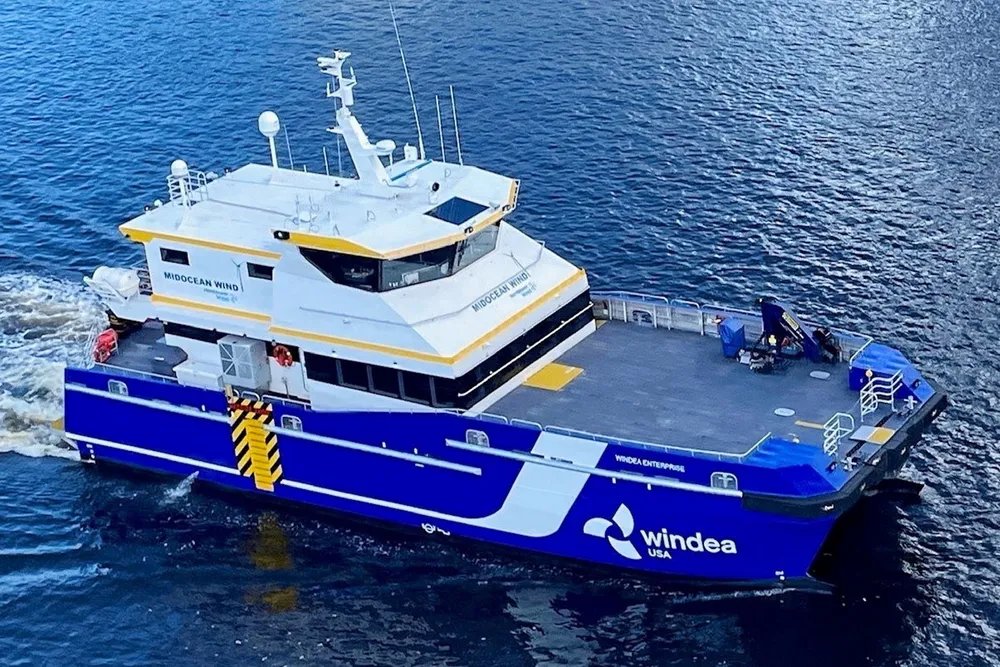US offshore wind spurs shipbuilding with latest vessel delivery by Florida-based yard
Second Vineyard Wind CTV by St. John's shipyard signals growing investment in Jones Act-compliant capacity building amid high costs and slow timelines

Florida-based St. John’s Ship Building announced delivery of another crew transfer vessel (CTV) to offshore wind contractor Windea CTV yesterday (Monday), the latest launch of an American built support ship.
“As we advance our CTVs, barges, and other vessel orders, we are supporting the proud tradition of American shipbuilding, which is the backbone of the US economy,” said St. John's president Joe Rella.
The shipyard owned by Americraft Marine within the privately held, New York-based Libra Group, has two more CTVs under construction for delivery this year.
Generational opportunity
Offshore wind is driving a generational opportunity in US shipbuilding as projects in the Northeast scramble for vessels to meet ramping demand.
With the Jones Act forbidding foreign-flagged vessels from calling in at consecutive US ports or points on the outer continental shelf, including wind turbines, offshore wind developers are forced to use either use domestically built ships or deploy costly and inefficient workarounds, resulting in billions of new orders with American shipyards.
“As the offshore wind industry moves into full scale operation, US shipbuilders are abuzz with activity constructing new vessels and retrofitting old ones to serve near-term projects,” said Sam Salustro, industry group Oceantic Network’s vice president of strategic communication.
Renewables advocate American Clean Power Association (ACP) tracks some 40 vessels either under construction or retrofit for offshore wind.
Commissioned by Richmond-based Dominion Energy for installation of its Coastal Virginia Offshore Wind (CVOW) array, the $625m vessel is the largest and costliest yet for the US sector.
Jones Act uplift
American built vessels routinely come in far pricier and take longer to deliver, however, contributing to already rocketing offshore wind costs and project delays.
Offshore energy consultancy Intelatus Global Partners found that service operations vessels (SOV) built in Europe cost less than $70m, while those built in the US come in around $100m and will likely rise to $170m in the next few years.
American-built CTVs cost around $12m each, according to Intelatus, in line with data from the Department of Transportation Maritime Administration (Marad)'s loan office, compared to between $5-6m in Europe.
Slower turnaround is another issue, and while European yards can build a CTV in around eight to 10 months and churn out 10 units a year, in “the US you're looking at about 12 months at least to as much as 15 to 20 months and maybe only two to four [CTVs] a year,” said Philip Lewis, director of research at Intelatus.
American competition
While US shipbuilders have seen no further WTIV orders and SOV capacity is tightly constrained, competition for much smaller CTV contracts could spark investments into yard capabilities to drive down costs and speed deliveries.
“The fact that CTVs are smaller, less complex vessels means lots of different yards can build them here in the US,” said Patrick Parsons, counsel & director of government affairs of the American Waterways Operators and chair of the American Maritime Partnership's Offshore Wind subcommittee.
“That creates significant competition between yards for developers looking at different options here.”
St. Johns said it “has undergone significant transformation over the past two years, including the modernisation of its shipbuilding capabilities and investment in new talent” as it pursues offshore wind orders.
Oceantic's Salustro said: “We’ve always called for increased spending into US shipyards to help modernise them, and we’ve seen offshore wind as a potential to help shipyards make these investments.”
(Copyright)